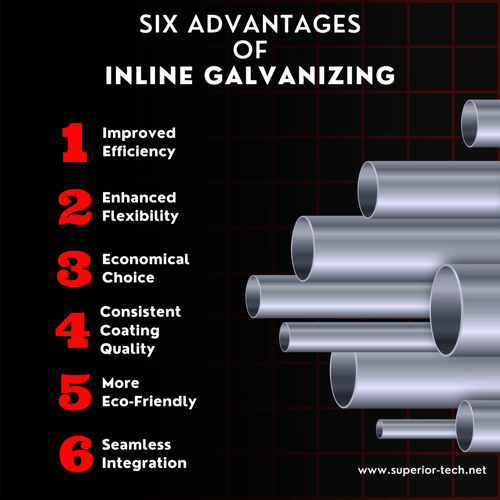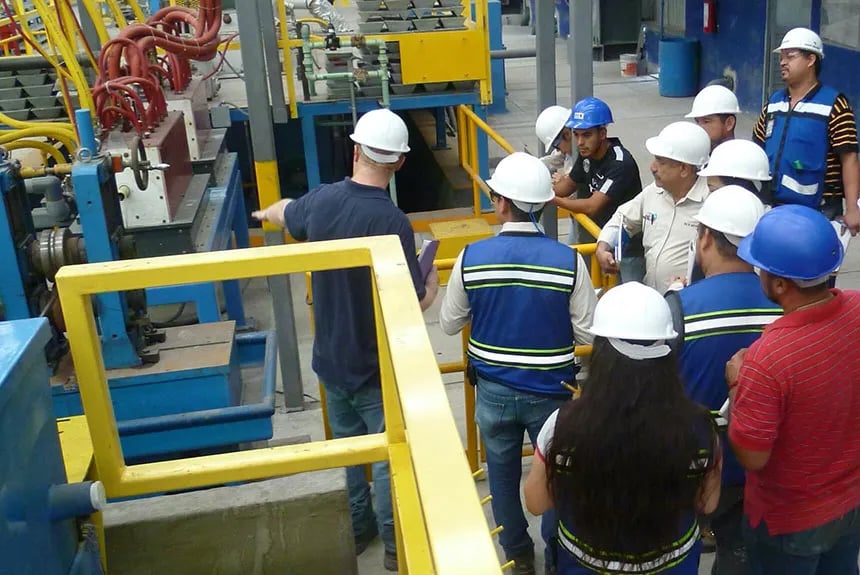
Galvanizing is a widely adopted method for protecting steel from corrosion and extending its lifespan. While hot dip galvanizing has long been the standard, inline galvanizing has proven to be a superior alternative. In this blog post, we will explore the benefits of inline galvanizing compared to traditional hot dip galvanizing, highlighting its advantages in terms of efficiency, flexibility, cost-effectiveness, and environmental sustainability.
1. Improved Efficiency:
Inline galvanizing offers significant advantages in terms of efficiency. Unlike hot dip galvanizing, which requires immersing the entire steel structure into a molten zinc bath, inline galvanizing applies zinc coating directly onto the steel tube during the manufacturing process. This integrated approach eliminates the need for additional handling, transportation, and immersion time, resulting in faster processing times, increased production rates, and reduced lead times.
2. Enhanced Flexibility:
Inline galvanizing provides greater flexibility in terms of product customization and design. With hot dip galvanizing, the size and shape of the steel structure are limited by the dimensions of the zinc bath. In contrast, inline galvanizing can accommodate a wider range of steel tube sizes and thicknesses. This flexibility allows manufacturers to galvanize various steel tubes and profiles, while maintaining precise control over the zinc coating thickness.
3. More Economical Choice:
Inline galvanizing offers cost advantages compared to hot dip galvanizing. Since inline galvanizing is integrated into the manufacturing process, it eliminates the need for additional transportation and handling costs associated with sending the steel to a separate galvanizing facility. Moreover, inline galvanizing allows for better material utilization and reduces the amount of zinc required, resulting in cost savings on both labor and material expenses.
4. Consistent Coating Quality:
Inline galvanizing ensures consistent and uniform coating quality across the entire steel tube. As the tube passes through the inline galvanizing line, the zinc coating is applied precisely and evenly, resulting in a smooth and uniform finish. In contrast, hot dip galvanizing can sometimes lead to variations in coating thickness due to factors like drainage, immersion time, and geometry. The consistent coating quality achieved through inline galvanizing contributes to enhanced corrosion protection and aesthetic appeal.
5. More Eco-Friendly:
Inline galvanizing is considered more environmentally sustainable than hot dip galvanizing. With inline galvanizing, the process can be designed to minimize the consumption of zinc and energy, resulting in reduced waste and lower carbon emissions. Furthermore, since inline galvanizing is performed within the manufacturing facility, it eliminates the transportation-related carbon footprint associated with shipping steel to a separate galvanizing plant.
6. Seamless Integration and Quality Control:
Inline galvanizing allows for seamless integration into the overall manufacturing process. It enables better control and monitoring of the galvanizing parameters, ensuring consistent coating quality and adherence to industry standards. Inline galvanizing lines can be equipped with advanced technology for real-time monitoring, quality control, and data collection, facilitating traceability, process optimization, and continuous improvement.
The benefits of inline galvanizing, including improved efficiency, enhanced flexibility, cost-effectiveness, consistent coating quality, environmental sustainability, and seamless integration, make it an attractive choice for manufacturers. As industries seek faster, more customizable, and environmentally friendly galvanizing solutions, inline galvanizing is poised to play a vital role in the future of steel protection and corrosion prevention.



